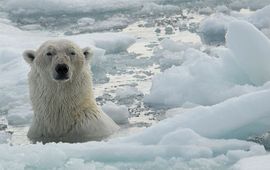Nature reports
Page 55 of 70 - 694 Results

An intensification of land use during the Iron Age and Early Roman period (600 BC – AD 100) in Brittany (France) led to a significant increase in the number of plant species. This demonstrates that, contrary to what one might..

Birch Aquarium teamed up with the UC San Diego Library’s Digital Media Lab to 3-D print a brace for its loggerhead sea turtle. It is believed to be the first 3-D-printed brace for a sea turtle’s shell...

Large-scale commercial trade of wild orchids is a pressing, but little-recognised conservation problem, according to researchers...

A new study from North Carolina State University, the Smithsonian and Duke University finds that bamboo lemurs, giant pandas and red pandas share 48 gut microbes in common – despite the fact that they are separated by millions of..

As sea ice melts, new findings add to concerns about the effects of ocean noise and increased human activity on deep-diving Arctic whales...

With the use of the GrowApp the seasonal change of a birch tree in Bennekom, the Netherlands, was captured by making a time-lapse video. Based on the individual photos, the change of the tree’s greenness over time was determined...

New research shows that pigeons can discriminate the abstract concepts of space and time - and seem to use a different region of the brain than humans and primates to do so. The finding underscores that animals beyond humans and..

The Wildlife Conservation Society (WCS), WWF, and BirdLife International today launched the Trillion Trees programme, a 25-year initiative to help implement and scale global forest commitments and spur greater ambitions towards..

A study of Darwin's finches, which live on the Galapagos Islands in the Pacific Ocean, has revealed direct genetic evidence that new species can arise in just two generations. It all started with the arrival of a strange bird to a..

Climate change discussions on social media are very influential. A new study in BioScience shows that when it comes to iconic topics such as polar bears and retreating sea ice, climate blogs fall into two distinct camps. With..
